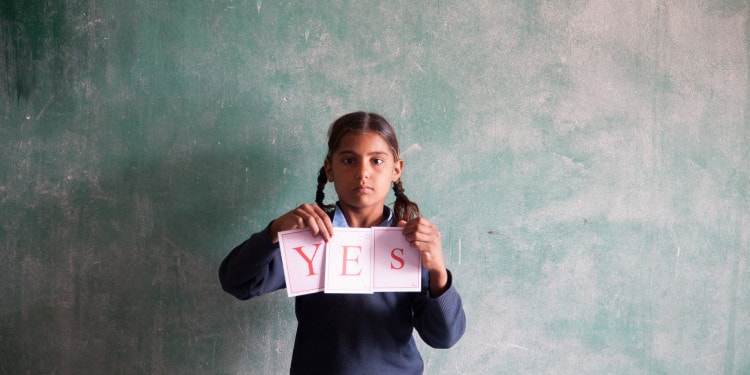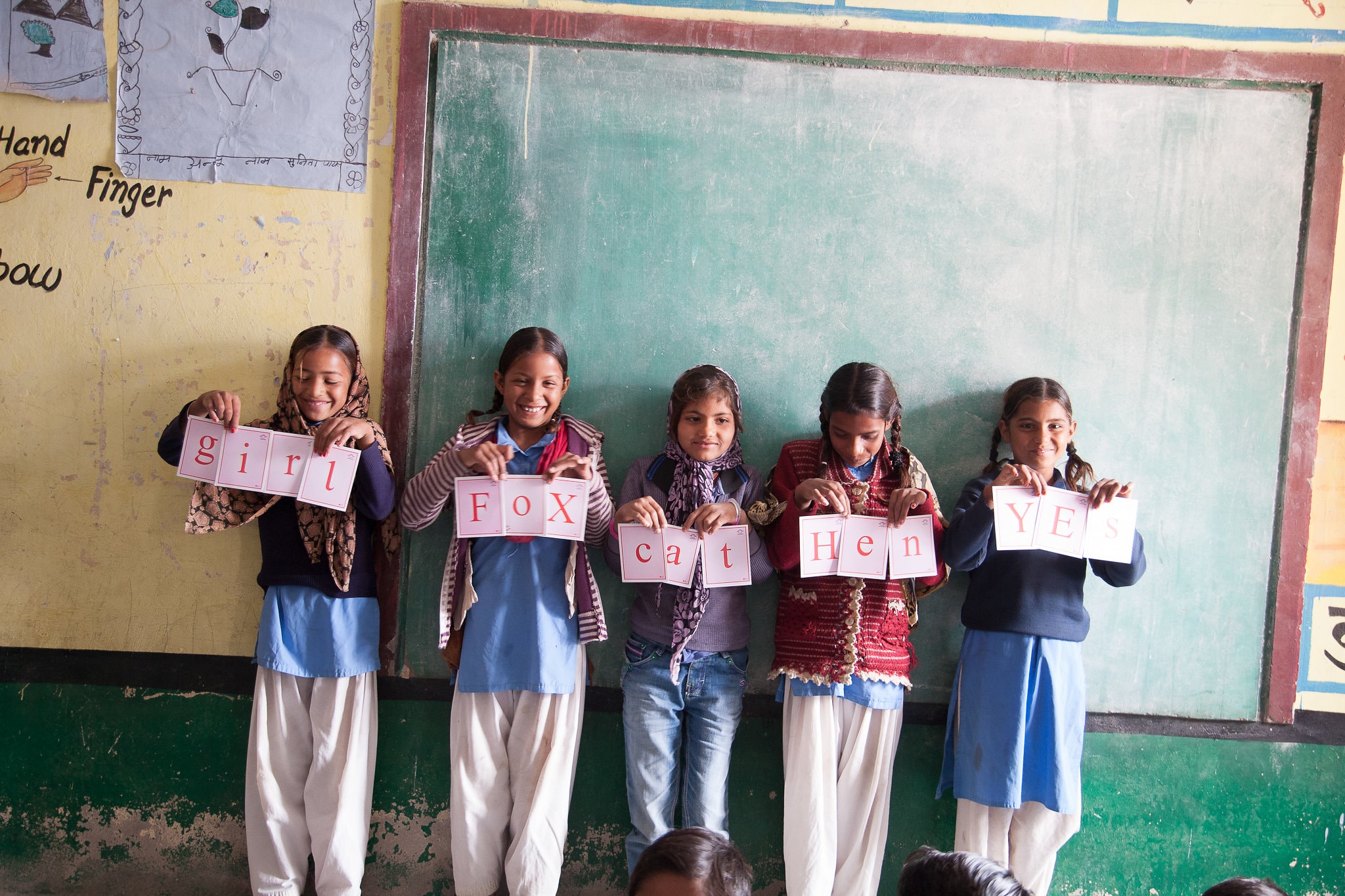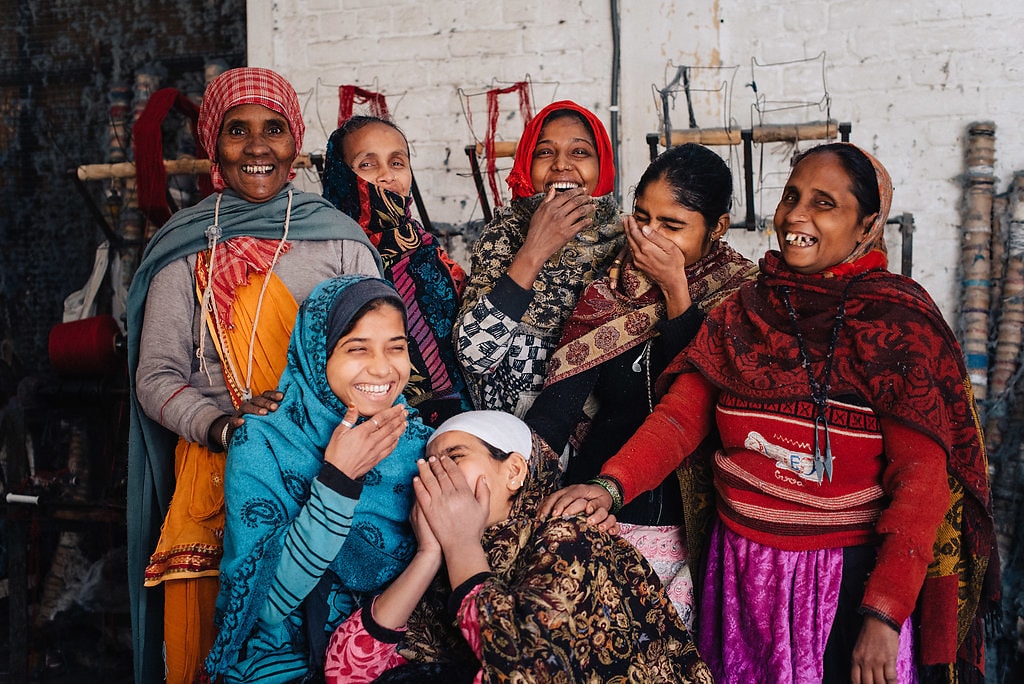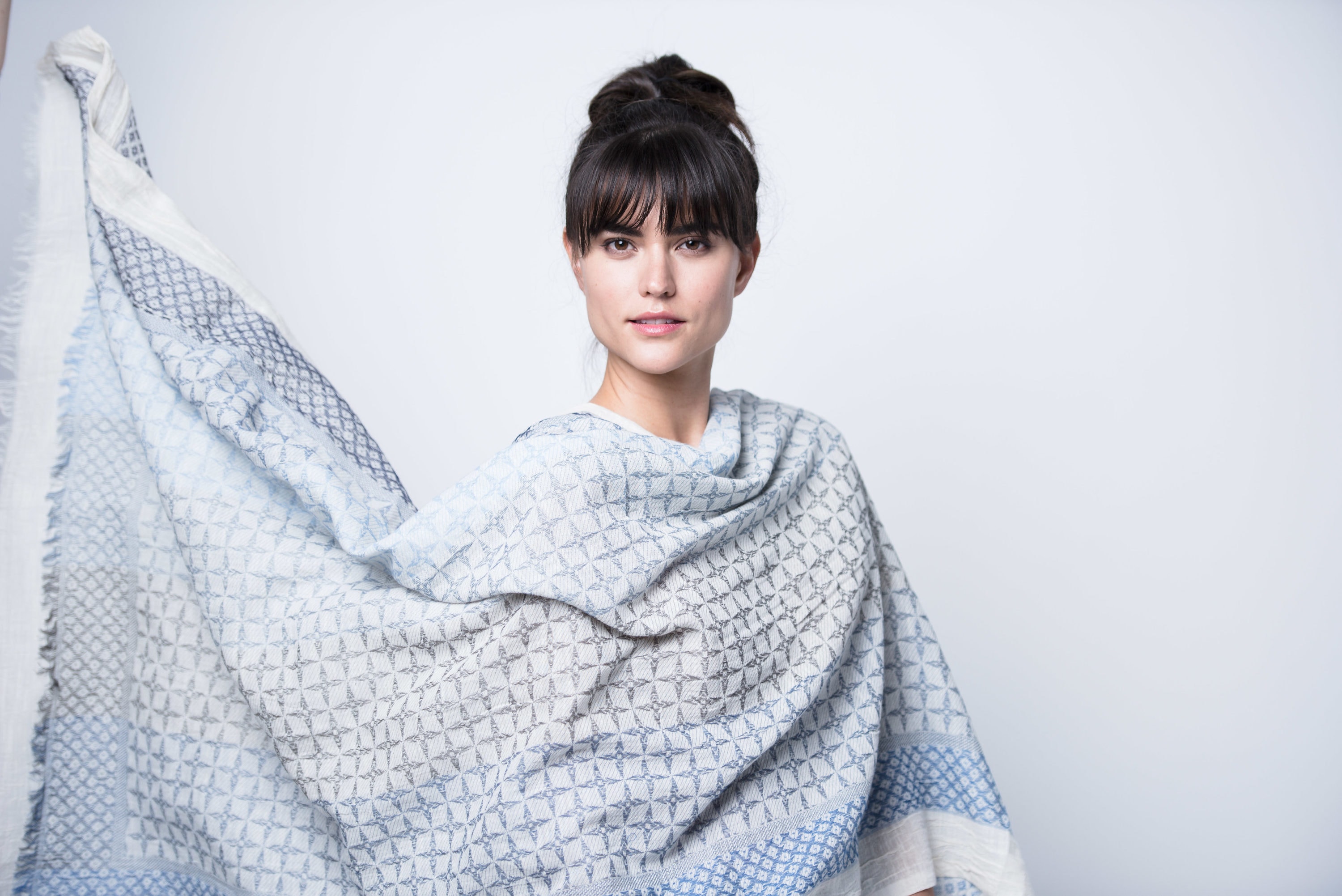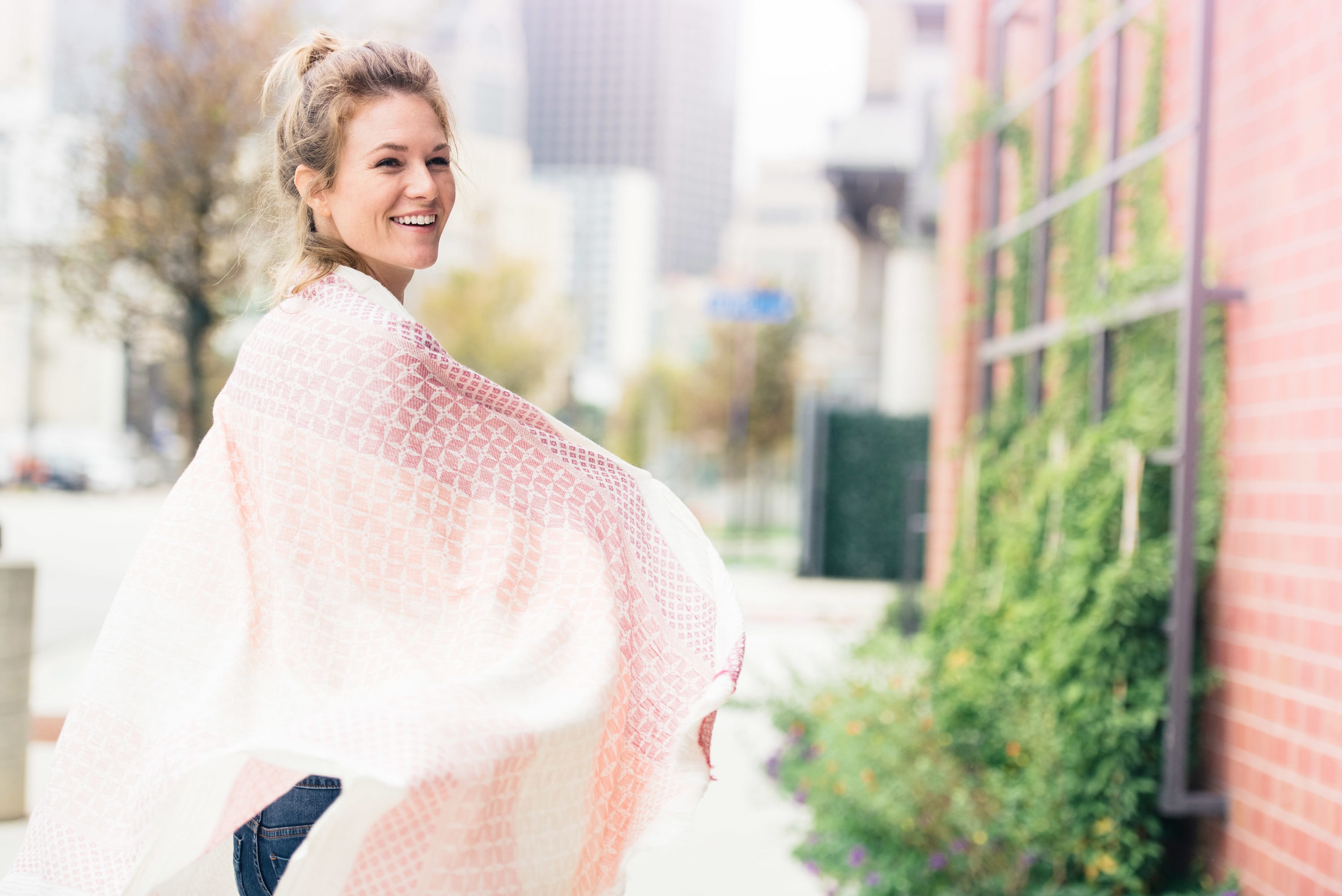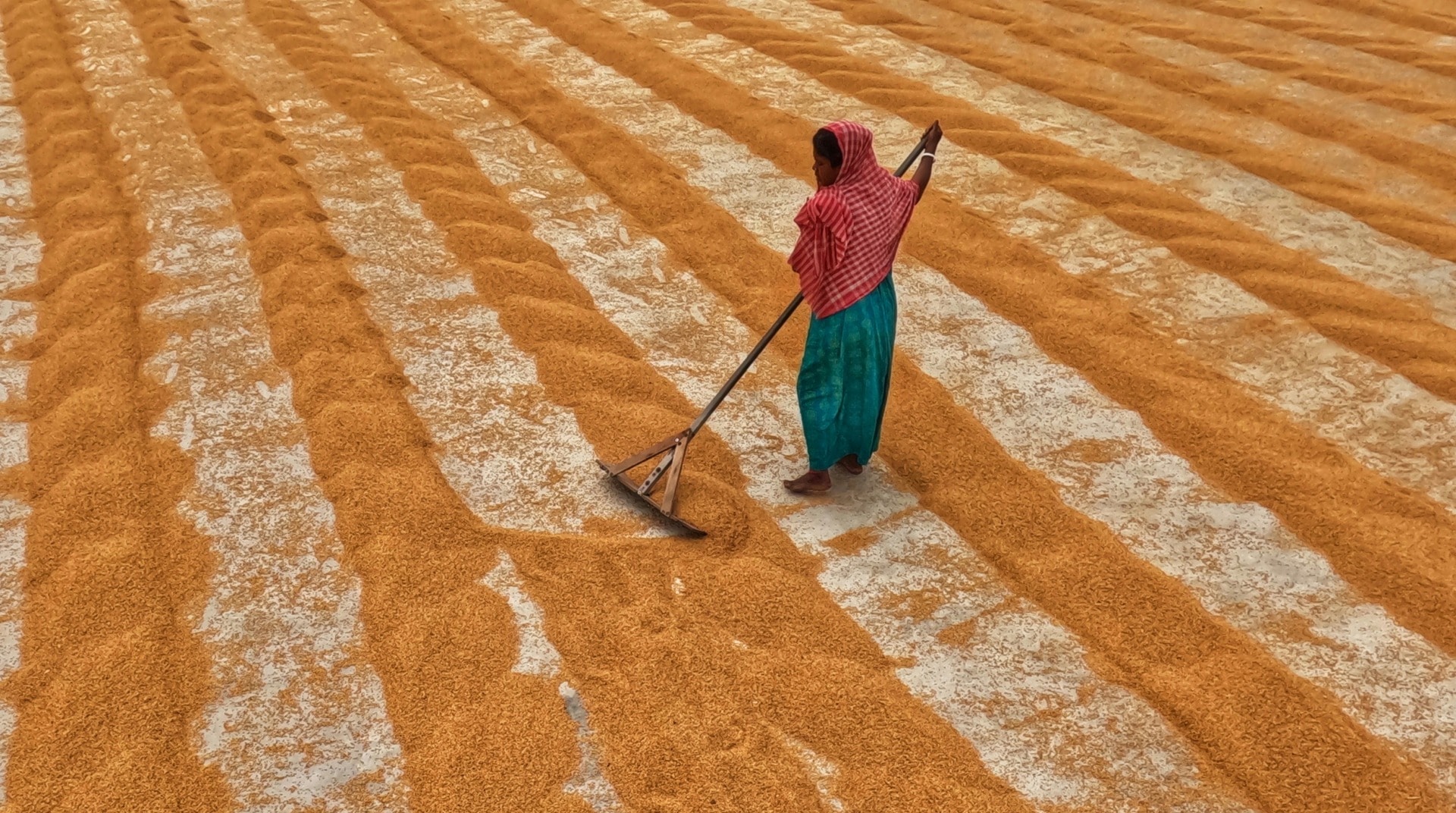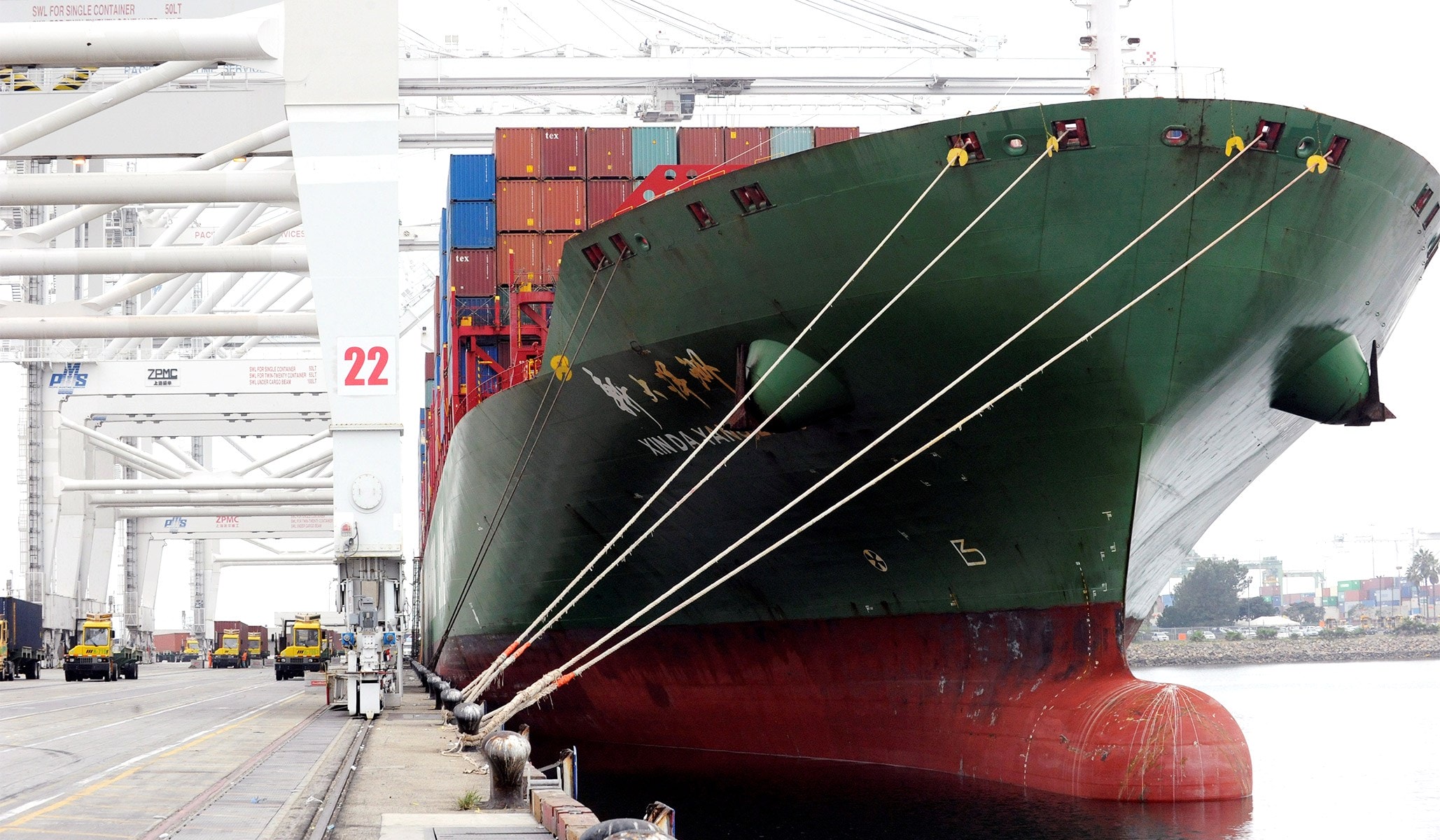Often giving an artisan employment, is providing him or her with the ability to craft a livelihood. The two come hand in hand, job security and an improved lifestyle.
Many consider artisans to represent a neglected minority within India’s employment structure, due to their skills being manual and a slow form of production. The truth is that artisans represent the second largest employment group in India, after agricultural workers.
Artisans are now part of a burgeoning sector amongst India’s employed masses. Bloom & Give are one of the inspiring companies that are improving women’s lives in India, though their giving back mode of business. With a focus on getting young girls in India into education, they are ensuring the prosperous development of these girls’ potential. I spoke to co-founder, Partha Raghunathan, to find out more about Bloom & Gives story.
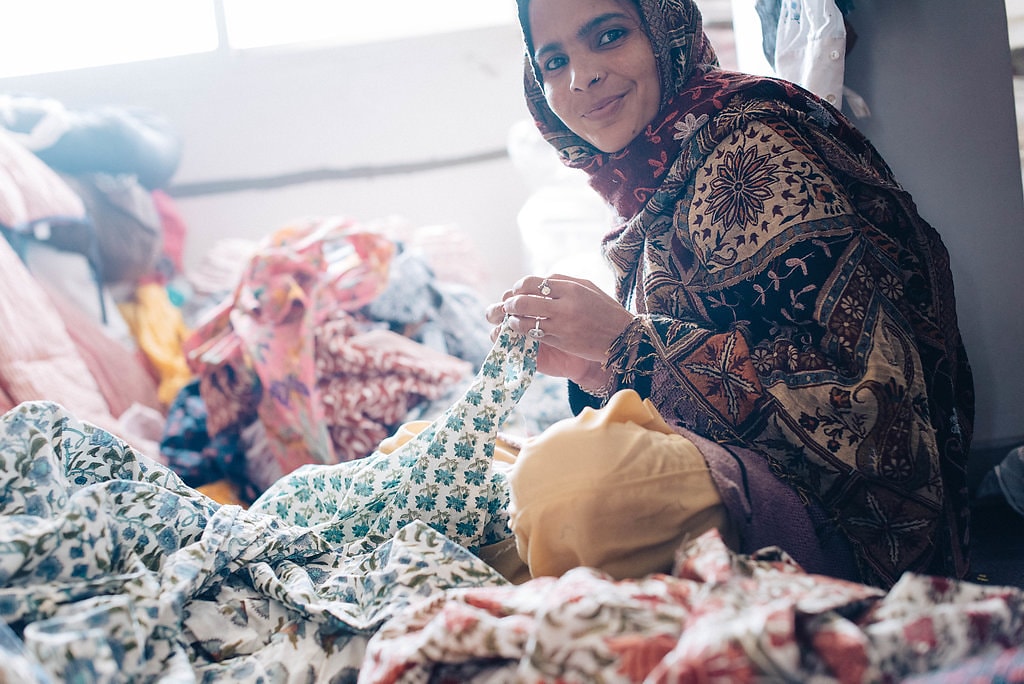
In the photo: A happy artisan, shrouded in color Credit: Bloom & Give
Q. What is the Bloom & Give story?
PR: A few years back, we (Madhu & Partha – founders) were visiting India, helping a friend source handmade scarves for her online store. During our trip, we ended up visiting many artisan co- operatives and were completely awestruck by the skill and precision that went into the making of these textiles.
We saw factories that operated with no electricity; cotton yarn being slowly and laboriously spun on a wooden wheel, gorgeous silk tassels being assembled one at a time, by hand; cashmere throws being dipped in vats of natural dye, mixed with uncanny precision; a group of women sitting outside their homes doing 8-foot long running stitches on a quilt by hand.
These highly specialized techniques of weaving, dyeing and sewing have been passed down, literally unchanged, through hundreds of generations. We instantly felt that if we could pair what we were seeing with contemporary design, we could create beautiful products with a rich story that would appeal to the modern woman.
The timing of the inspiration was perfect, at the time of this trip, we were both on a break from our careers in the Tech industry, and had committed to doing something more impactful and fulfilling in the second half of our careers.
While spending time in the villages, we also couldn’t help but notice the massive gender disparity and inequity.
In rural Rajasthan, one of the States of India with some of the richest traditions of art & craft, 50% of the girls marry before the age of 18. It was very jarring for us to see 13-year old brides, and 18-year old moms in these villages. Between us, we have 3 daughters, 10, 14 and 19 years old, which made this even harder to process. It seemed that along with the beautiful skills of textile making, truly horrendous and misogynistic beliefs about the role of girls and women had also been faithfully passed down hundreds of generations.
We then discovered that Education is the only effective way for a girl to escape this endless rut of childhood marriage, pre-teen pregnancy and abuse. When a girl goes to school, she earns more money, has healthier children, and reinvests more in her family, this is according to every credible source that’s ever researched the subject of gender disparity in the 3rd world.
In the photo: Girls class at one of Bloom & Give’s sponsored schools Credit: Bloom & Give
We also witnessed this first hand in many villages, where intervention programs had improved enrollment, women were playing a strong leadership role in the community, often running the co-ops and seemed “equal in stature” to the men around them.
One of the lasting impressions of the trip was a meeting with Ms. Maya Saini, an English teacher in a girls’ middle school outside the city of Ajmer. The day we met her, a group of her former students, now in high school, were visiting her, apparently a role model for these kids, and the main reason why they were still in school.
Interacting with that confident dynamic group of girls, hearing about what each one wanted to do with her life, was one of the most uplifting moments of our lives. We were confident that we could make an impact here by funding the right programs and backing people like Maya (our first give-back project was in her school). That’s when we decided to adopt a socially conscious model and integrated the give-back into our business model.
In the photo: A group of artisan women in India Credit: Bloom & Give
Q. How is sustainability present in your business model?
PR: First and foremost, we donate 10% of our sales (rougly 50% of profits) to put support girls education programs. Here I am going to refer you to our website for more info – https://www.bloomandgive.com/pages/how-we-give
(it does a much better job of articulating our give-back than what I will be able to do)
Also, our products are typically made by small co-ops of artisans that use traditional techniques that have been passed down the ages. These techniques such as hand-weaving or block-printing have an almost zero environmental footprint. Take the example of our kitchen towels, organic cotton yarn is hand-spun, hand-dyed and loomed in the traditional hand-operated wooden looms in Kerala, India. It’s a craft traditionally performed by women in the community to make saris and mundus (a loose skirt worn by men and women) in this part of India for 500 years. This entire process has a zero-energy footprint, and it sustains the livelihood of women.
In the photo: A Bloom & Give Sahri Credit: Bloom & Give
Q. What is the biggest challenge you faced with?
PR: Honestly, no un-surmountable challenge yet. We feel very confident about our ability to profitably operate our model and scale the supply-side. We have also been growing 200% each of the last 3 years in sales and feel our biggest challenge is to continue to find various levers of growth as we get bigger, and hopefully catch some major PR breaks.
Q. Could you please tell us more about your social commitment?
PR: Every bit as much tradition, skill, dedication, passion and ethical consideration goes into making a handmade Indian textile, as into an Italian suit, a German car or a pair of American jeans. We want to be the pioneering storytellers of this incredible artistry. We also want to grow to the point where we can donate at least a million dollars a year to educate girls. And we want to achieve these goals without sacrificing any of our core values of fair trade and customer service.
In the photo: Bloom & Give product light colored product Credit: Bloom & Give
Q. How will you improve your global sustainable impact?
PR: We are increasingly moving towards more sustainable sources of raw material – organic and sustainably farmed cotton, bamboo-fiber and cruelty-free / wild sustainable silk, sustainably harvested leather etc.
Editors Note: The opinions expressed here by Impakter.com columnists are their own, not those of Impakter.com


